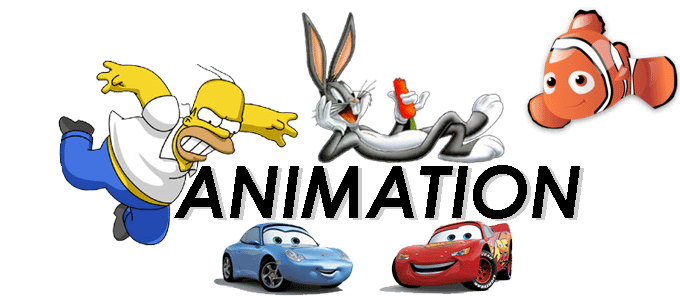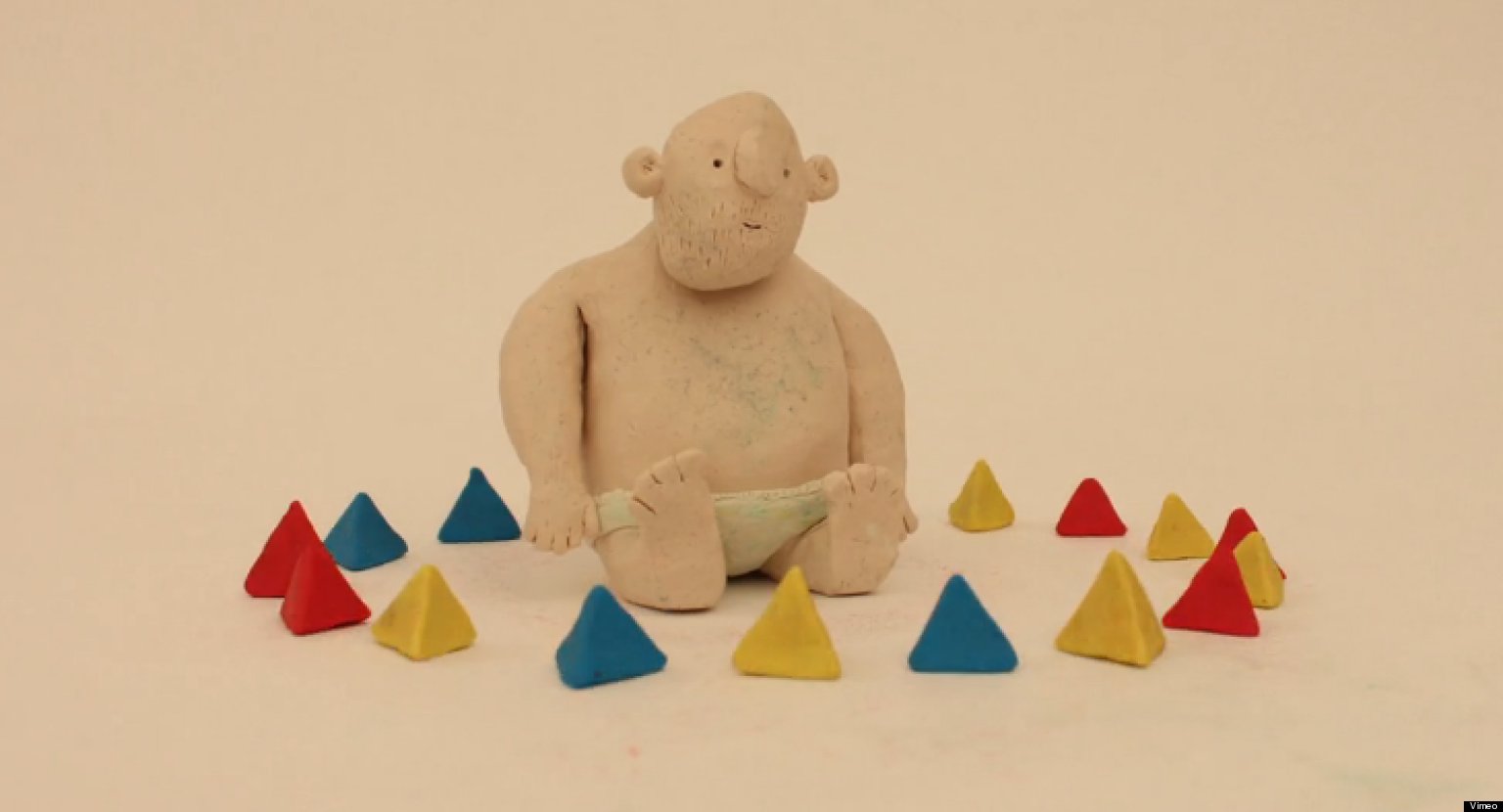more animation glossary
ROTOSCOPING:
A method for the animation of live action by tracing actual film onto drawing paper on a frame by frame basis.
SCENE:
A portion of a picture depicting one action or a series of action using one background.
SEQUENCE:
Usually a series of scenes depicting the continuation of one action or series of actions with the same character or characters.
FRAME:
An individual picture on the film.
PAINTER:
Sometimes referred to as an "Opaquer." A person who paints the opaque color on the cells.
TIMING:
In reference to action as a whole - the time used to present an action in terms of feet and frames. In reference to individual drawings, the spacing of one drawing to another in actual distance.
BOOK ILLUSTRATION:
Refers to original art created for reproduction in a book, in any media.
MODEL STATUE OR MAQUETTE:
A three dimensional statue or figurine, produced in the studio in very limited numbers as a reference to assist the animators in visualizing what a character will look like from varying perspectives. Usually constructed of plaster with wire armature and painted in colors.
STORY DRAWINGS:
These drawings, created in series, are used to describe the story and action, or other conceptual aspect of an animated film during the developmental stage. Done in various media, they can be anything from thumbnail sketches to beautifully colored finished pieces
of art.
STORYBOARD:
Board on which story sketches are pinned in strip fashion in an order that tells the complete story.
MODEL:
Drawings made as a guide for the establishment of color and form and detail of a character.
CONCEPT ART
Includes all pre-production artwork created before actual animation
has begun.
CHARACTER DESIGN:
Pre-production sketches, drawings, and cells depicting preliminary
character studies.INSPIRATIONAL/CONCEPT
SKETCH:
Created by different artists in a wide variety of media to suggest the mood, look, color styling or overall atmosphere
Terminology
Film Techniques
Continuity Suggests continuous action with respect to angles, props and positioning of actors
Cut Instant change between frames
Mix/Dissolve Image on screen appears to dissolve/fade away while another scene is appearing; originally done by overlaying
several frames when splicing celluloid
Superimposition Similar to mix but lasts for longer so both shots are actually visible at once
Fade in/Fade out Image fades into blackness before the next appears or a scene emerges from blackness
Wipe One scene pushes another off the screen sideways, in order to replace it
Matched cut:Shows Familiar relationship between shots making the change smoother
Jump cut: This is when two sequential shots of the same subject are taken from camera positions.
Motivated cut:This is a cut made at the point where something has occured. This makes the viewer immediately want to see something not currently visible
Film movement
Regular speed 24 frames per second Gives a sense of reality
Slow motion Filmed at a faster rate than 24 frames per second but
played back at regular speed
Gives the effect of slow motion when played at normal
speed; gives a sense that time is suspended; creates
tension, excitement, romance
Fast motion Pictures taken at very high speeds (128 frames per
second or more)
Movement is speeded up; creates tension, excitement,
anxiety, comedy
photography glossary
Adjustable camera
A camera with manually adjustable settings for distance,lens openings, and shutter speeds.
Ambient light
The available light completely surrounding a subject. Light already existing in an indoor or outdoor setting that is not caused by any illumination supplied by the photographer.
Angle of view
The area of a scene that a lens covers or sees. Angle of view is determined by the focal length of the lens. A wide-angle lens (short focal length) includes more of the scene—a wide angle of view—than a normal (normal-focal length) or telephoto (long focal-length) lens.
Camera Angles
Various positions of the camera (high, medium, or low; and left, right, or straight on) with respect to the subject, each giving a different viewpoint or effect.
Backlighting
Light coming from behind the subject, toward the camera lens, so that the subject stands out vividly against the background. Sometimes produces a silhouette effect.
Balance
Placement of colors, light and dark masses, or large and small objects in a picture to create harmony and equilibrium
Contrast
The range of difference in the light to dark areas of a negative, print, or slide (also called density); the brightness range of a subject or the scene lighting
Cropping
Printing only part of the image that is in the negative or slide,usually for a more pleasing composition. May also refer to the framing of the scene in the viewfinder.
Darkroom
A light tight area used for processing films and for printing and processing papers; also for loading and unloading film holders and some cameras.
Animation
Animation can be a manipulation of electronic images done by computer/ drawn/clay/photos in order to create a moving image
It's also the the process of creating motion and shape change illusion by means of the rapid display of a sequence of static images that minimally differ from each other. The illusion—as in motion pictures in general—is thought to rely on the phi phenomenon. Animators are artists who specialize in the creation of animation.
 Animations can be recorded on either analogue media, such as a flip book , motion,picture film, video tape, or on digital media , including formats such as animated GIF , flash animation or digital video. To display it, a digital camera ,claymation/puppets computer, or projector are used.
Animations can be recorded on either analogue media, such as a flip book , motion,picture film, video tape, or on digital media , including formats such as animated GIF , flash animation or digital video. To display it, a digital camera ,claymation/puppets computer, or projector are used.
Animation creation methods include the traditional animation creation method and those involving stop motion animation of two and three-dimensional objects, such as paper cutouts ,puppets and clay figures . Images are displayed in a rapid succession, usually 24, 25, 30, or 60 frames per second.

 Stop motion (also known as stop frame) is an animation technique to make a physically manipulated object or persona appear to move on its own. The object is moved in small increments between individually photographed frames, creating the illusion of movement when the series of frames is played as a continuous sequence. Dolls with movable joints or clay figures are often used in stop motion for their ease of repositioning. Stop motion animation using plasticine is called clay animation or "clay-mation". Not all stop motion requires figures or models; many stop motion films can involve using humans, household appliances and other things for comedic effect. Stop motion using objects is sometimes referred to as object animation.
Stop motion (also known as stop frame) is an animation technique to make a physically manipulated object or persona appear to move on its own. The object is moved in small increments between individually photographed frames, creating the illusion of movement when the series of frames is played as a continuous sequence. Dolls with movable joints or clay figures are often used in stop motion for their ease of repositioning. Stop motion animation using plasticine is called clay animation or "clay-mation". Not all stop motion requires figures or models; many stop motion films can involve using humans, household appliances and other things for comedic effect. Stop motion using objects is sometimes referred to as object animation.
 Each object or character is sculpted from clay or other such similarly pliable material as plasticine , usually around a wire skeleton called an armature, and then arranged on the set, where it is photographed once before being slightly moved by hand to prepare it for the next shot, and so on until the animator has achieved the desired amount of film. Upon playback, the human mind of the viewer perceives the series of slightly changing, rapidly succeeding images as motion.
Each object or character is sculpted from clay or other such similarly pliable material as plasticine , usually around a wire skeleton called an armature, and then arranged on the set, where it is photographed once before being slightly moved by hand to prepare it for the next shot, and so on until the animator has achieved the desired amount of film. Upon playback, the human mind of the viewer perceives the series of slightly changing, rapidly succeeding images as motion.
Stop-motion

 Stop motion (also known as stop frame) is an animation technique to make a physically manipulated object or persona appear to move on its own. The object is moved in small increments between individually photographed frames, creating the illusion of movement when the series of frames is played as a continuous sequence. Dolls with movable joints or clay figures are often used in stop motion for their ease of repositioning. Stop motion animation using plasticine is called clay animation or "clay-mation". Not all stop motion requires figures or models; many stop motion films can involve using humans, household appliances and other things for comedic effect. Stop motion using objects is sometimes referred to as object animation.
Stop motion (also known as stop frame) is an animation technique to make a physically manipulated object or persona appear to move on its own. The object is moved in small increments between individually photographed frames, creating the illusion of movement when the series of frames is played as a continuous sequence. Dolls with movable joints or clay figures are often used in stop motion for their ease of repositioning. Stop motion animation using plasticine is called clay animation or "clay-mation". Not all stop motion requires figures or models; many stop motion films can involve using humans, household appliances and other things for comedic effect. Stop motion using objects is sometimes referred to as object animation.
Claymation
claymation is one of many forms of stop motion animation. Each animated piece, either character or background, is "deformable"—made of a malleable substance, usually plasticine clay.
 Each object or character is sculpted from clay or other such similarly pliable material as plasticine , usually around a wire skeleton called an armature, and then arranged on the set, where it is photographed once before being slightly moved by hand to prepare it for the next shot, and so on until the animator has achieved the desired amount of film. Upon playback, the human mind of the viewer perceives the series of slightly changing, rapidly succeeding images as motion.
Each object or character is sculpted from clay or other such similarly pliable material as plasticine , usually around a wire skeleton called an armature, and then arranged on the set, where it is photographed once before being slightly moved by hand to prepare it for the next shot, and so on until the animator has achieved the desired amount of film. Upon playback, the human mind of the viewer perceives the series of slightly changing, rapidly succeeding images as motion.
A consistent shooting environment is needed to maintain the illusion of continuity : objects must be consistently placed and lit, and work must proceed in a calm environment.
White board/Cutout animation is a technique for producing animations using flat characters, props and backgrounds cut from materials such as paper, card, stiff fabric or even photographs. The world's earliest known animated feature films were cutout animations (made in Argentina byQuirino Cristiani); as is the world's earliest surviving animated feature.also using white board and markers
Today, cutout-style animation is frequently produced using computers, with scanned images or vector graphics taking the place of physically cut materials. South Park is a notable example of this transition since its first episode was made with paper cutouts before switching tocomputer animation.
More complex figures depicted in cutout animation, such as in silhouette animation, often have joints made with a rivet or pin – or when made on a computer, an anchor. These connections act as mechanical linkage which have the effect of a specific, fixed motion.



No comments:
Post a Comment